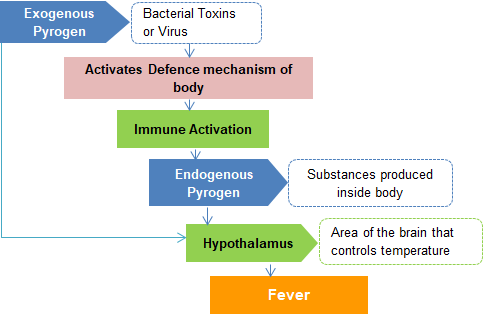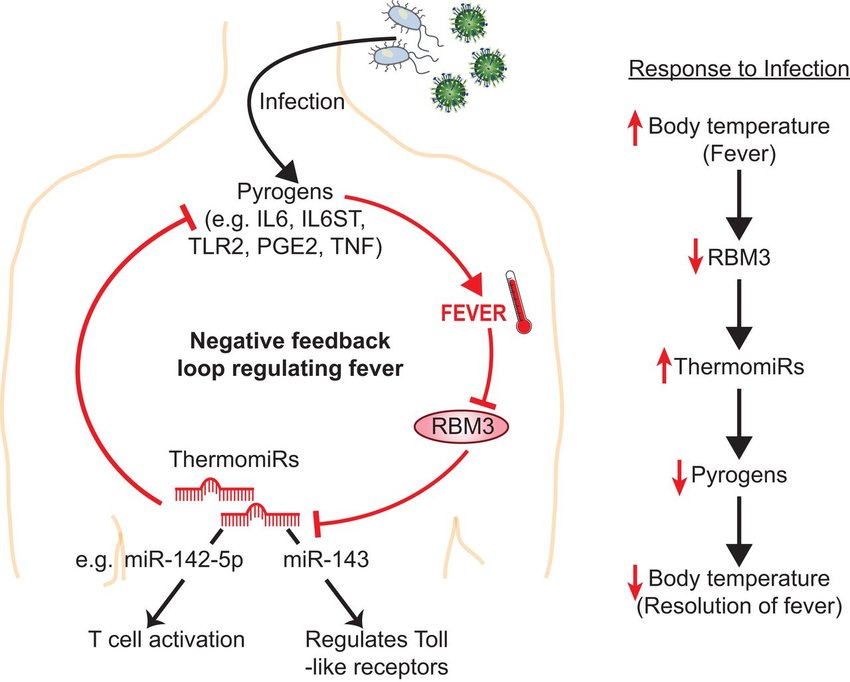
Fever is a natural defence mechanism that the body uses to fight off viruses and bacteria. It is caused by the release of certain hormones, such as interleukin-1 and tumor necrosis factor, which increase the body’s temperature. This higher temperature makes it more difficult for viruses and bacteria to survive and reproduce in the body, and so the body is able to fight off infection more effectively.

- The body senses a pathogenic organism and triggers an immune response.
- White blood cells release inflammatory cytokines and other molecules that stimulate the hypothalamus.
- The hypothalamus responds by raising the body’s temperature, which is known as fever.
- The elevated temperature creates an inhospitable environment for pathogens, making it harder for them to survive and reproduce.
- The fever also causes the body to produce more white blood cells, which helps to fight off the infection.
- The body’s temperature returns to normal once the infection has been eliminated.
